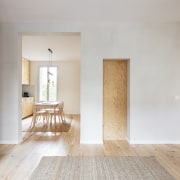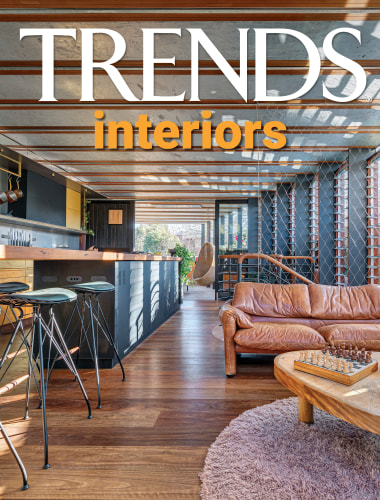When less becomes more
Converting this 50m² one bedroom apartment into a home for a family of five was an exercise in diagnostic thinking – together with a master class in space shuffling
Designed by l'atelier
From the architects
With a real estate market always under pressure and the growing attraction of Paris both locally and globally, small housing is becoming an undeniable reality in the French capital. Small apartments and related challenges have all become more relevant in the context of lockdown when people need to study and work from home.
The architect's mission is to take an active part in the urban changes with high-quality projects in line with the current issues.
Over the past three years, l’atelier has worked on the design of more than 40 small apartments in the Paris area. Based on this experience, they were able to identify some recurring projects. For example: converting a garret into an apartment, adding a bedroom for a new child to an already constricted apartment, or as in the one presented here, designing a family apartment with 10m² per person.
This project began with a rather surprising apartment tour with a new client. This owner had recently bought an old apartment in the south of Paris, and he was looking to achieve a quite ambitious project: converting this 50m² one bedroom apartment into a home for a family of five (a couple and three children aged 18, 15 and 7).
L’atelier started the design process with the diagnostic phase. This step was a crucial one as it revealed the opportunities and constraints of the project. This methodology was inspired by the creative design process in urbanism, where they use the analysis of the neighbourhood as a source of inspiration to design a project.
For this apartment, the diagnostic phase highlighted several elements. First, the overall floor plan of the apartment is almost square, which was an advantage in terms of fitting all the required spaces. Then, despite its small size, the apartment runs from the front to the back of the building and is only seven metres long. Therefore, every space benefits from maximum natural light. Finally, the three metre high ceiling offers lots of opportunities for verticalisation.
The only constraint in the project was the load-bearing wall running across the width of the apartment. But this wall already had three openings, and they allow enough flow between each side.
Based on these elements, l’atelier decided to create a living area running from front to back of the building to take advantage of the morning and evening light. This space is staggered to create open subspaces, a kitchen and dining room on one side, and a living room on the other. The entrance is integrated as part of this living area, at the junction of the two subspaces.
Then, l’atelier chose to design a compact and vertical area for the bathroom and the children’s bedrooms. In the boys’ bedroom, there are two one-meter high sleeping alcoves, one is located above the bathroom, and the other one is under the elder daughter’s bedroom. This latter sleeping area is reachable via a Donald Juddesque staircase in the living room.
Another important factor in this project was timing. The two eldest children were soon to be independent, and the request was to design an apartment that could adapt and evolve so that there would eventually be only one bedroom left after the children had left home. Therefore, l'atelier staged the project in three different phases, and we included a few easily movable partitions in the floor plan.
As of today, the apartment can accommodate five people, and this layout will remain as is for the next three years. When the two eldest children leave, the parents’ bedroom wall will be removed to create a bigger living room. Finally, in about ten years, when the youngest boy leaves, the two remaining bedrooms will connect to make a larger bedroom for the parents.
The choice of materials also played an important role in this project. To make the apartment feel more spacious, l’atelier used the same material for all doors and windows; light-coloured pine wood from Poland with a generous yet fairly uniform pattern.
Very light pine wood was also used for the floor to optimise natural light.
Credit list
Architects
Story by: Trendsideas
Photography by: Tim Van de Velde
Home kitchen bathroom commercial design
Walk this way – garden pathways to lead your thinking
From farmhouse to farmstead
Bigger or smaller?















